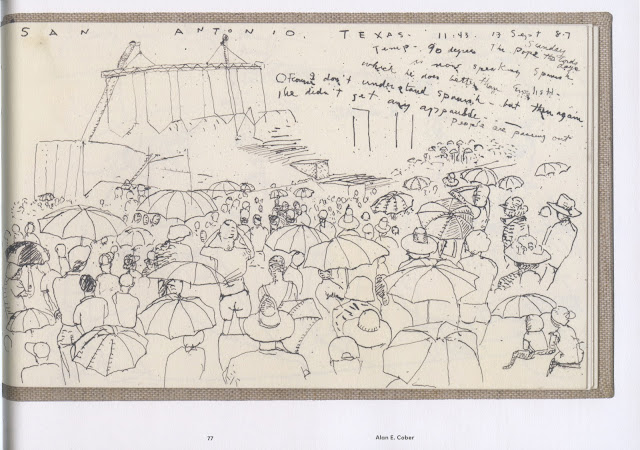Bill Watterson, creator of the legendary comic strip Calvin & Hobbes, said, "Every line you draw drops your pants."
It's true. A pen nib is a better lie detector than a polygraph needle. Unlike paintings, which can be polished and refined and layered with glazes, drawing is a more direct and immediate medium. It records initial inspirations and preliminary ambitions, and reveals every tremor or wrong move. It betrays your mistakes and displays your successful gambles.Perhaps for this reason, drawing was historically considered a secondary art form, a stepping stone to what Vasari described as the three primary arts: painting, sculpture, and architecture. But in the 20th century, drawing gained new respectability. As our appreciation for spontaneity, experimentation, vitality and economy grew, classical academy paintings came to be viewed as boring. Collections of preliminary studies and informal drawings were mined for deluxe art books and museum exhibitions.
It’s not surprising that the spotlight has continued to move, back to the origins of drawing in the sketchbooks of artists. Sketchbook pages by Edward Hopper and John Singer Sargent and a hundred other artists have been published. J.M.W. Turner's watercolor sketchbooks are cherished as the moment of first inspiration for his large oil paintings.
Now Martin Salisbury has come forward with a rich collection entitled Illustrators' Sketchbooks, showcasing the private sketchbooks of 60 well selected illustrators. For each artist there is a thoughtful description of the illustrator with quotes, along with 5 or more pages from their sketchbooks.
 |
| Alan Cober |
 |
| Remarkable entries in the sketchbook of Ronald Searle showing how he experimented with the effects he later used in his drawings |
 |
| Sketches by John Cuneo, one of my favorite contemporary illustrators |
 |
| Oliver Jeffers |
 |
| Charles Tunnicliffe |
 |
| Kenyon Cox |
The book contains several of the usual suspects such as Beatrix Potter, Quentin Blake and Edward Gorey but I most enjoyed some of the names that were new to me, especially the examples from international illustrators.
An interesting selection of images that you won't normally see in books and magazines.





Cuneo likes to draw barking dogs snapping at his characters.
ReplyDeleteWhere did Watterson say that? He doesn't talk much in public.
ReplyDeleteThat tree is unbelievable. I’ll be inspired by that for months
ReplyDelete